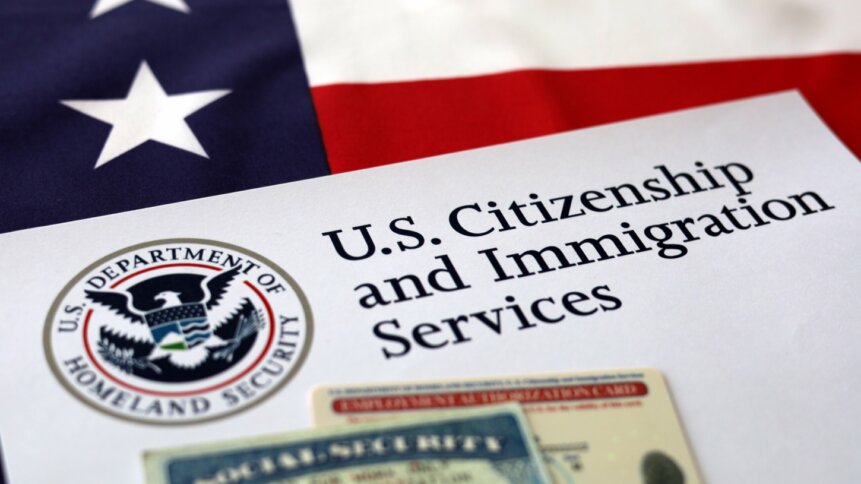Tech layoffs trigger time bomb for foreign employees

• US tech layoffs are especially hard on H-1B visa-holders.
• H-1B holders have 60 days after being let go to find another company to sponsor them.
• There are calls on President Biden to take executive action to solve the resultant skills drain.
Widespread layoffs in the technology industry are making life for tech professionals uncertain. Among the workers anticipating – or experiencing – unemployment are employees who moved to work in the US from across the globe.
During the tech boom years, the US tech industry relied on foreign workers. Silicon Valley itself was built by great minds from all over the world convening in California. Now that the industry is shrinking, all those experts are displaced.
US layoffs hit H-1B visa holders harder
What makes the issue more difficult for foreign workers is the fact that residency in the States is tied to employment. A vast majority of technology industry professionals move to America on a H-1B visa. That visa is meant to allow employers to fill labor shortages for jobs that require a college degree, by providing work authorization for migrant workers in fields like accounting, journalism, health and medical, and teaching.
Getting an H-1B is highly competitive: the US Citizenship and Immigration Service opens a lottery for the visas once a year. This year, there were more than 780,000 applications, but only 85,000 visas will be granted, so just around 10% of applicants will get the visas they want.
Once the visa is obtained, it lasts for three years, after which it can be renewed. Companies sponsor applicants that they hope to employ long-term – and until recently, professionals with a H-1B assumed their roles would be stable enough to allow them to stay in the US.

Welcome – but for how long?
Officially, the H-1B is a “nonimmigrant” visa. This type of US visa is for visits related to work or long periods of travel (an immigrant visa is for those moving to America for good). Usually, a nonimmigrant visa application must include proof of intention to leave – something like property in the applicant’s home country.
There’s no need for this with a H-1B visa, however. It’s considered to have dual intent, meaning that individuals might move to America for work with a possible intention to stay permanently should it go well; after the first renewal ends (when the person will have been in America for a total of six years), there’s the option of citizenship.
That’s why foreign workers in the US on H-1B visas tend to settle, buying property in and moving family to America. Which is why it is so imperative to maintain employment. If a tech professional is laid off, they have 60 days to find a new job in their specialized industry, with another employer that’s willing to sponsor their visa.

US tech layoffs can be especially devastating if you have an H-1B visa.
NPR podcast Planet Money heard from Aashka, a product engineer at Amazon, and Nilanjan, who worked in digital advertising for Google. Both lost their jobs in the layoffs at the start of the year.
Despite publicity about the layoffs, it was a huge shock for Aashka that she lost her job. Apparently, only a few weeks before she found out on January 18, her team was singled out for praise at an all-team meeting.
When Nilanjan was woken up by an email announcing layoffs early one morning, he immediately tried to log into his work email. He said “it took me about 15 minutes of trying out different ways of logging in to realize, no, this has actually happened, and this is the reality. I have just lost my job.”
Both Aashka and Nilanjan are H-1B recipients, so the race was on. Not only were their redundancies sudden, but an expired visa and having to leave the US would be catastrophic for them both: Nilanjan and his wife were expecting a baby, and Aashka was paying tuition for her younger sister to study in America.
Although the H-1B is a good way to bring in highly skilled, well-trained workers, and good for the economy, as things currently stand, it just doesn’t work. The precariousness of the visa is off-putting and prevents talent from choosing the US.
Changing the employment conversation
By April, Aashka had been to interviews at 30-40 companies. She’d wait until the very end of these interviews to mention that she was on the H-1B visa, “and a lot of the times that seemed to change the conversation.”
Businesses are sometimes reluctant to foot the cost and paperwork of sponsoring an H-1B, particularly given the state of the industry at the moment – few companies are desperate for staff.
This is the root of an issue with the H-1B visa, and what happened to Aashka. She has had to take a much lower-paying job working for a pharmacy because they agreed to sponsor her visa. This kind of thing – people doing tech work at non-tech companies for non-tech salaries – is happening to a lot of people on H-1B visas right now.
The pressure of the 60-day rule, coupled with the limited number of visas, makes the system easy for businesses to exploit.
YOU MIGHT LIKE

Traumatic 12 months of technology layoffs
There are other substantial pressures for H-1B workers who remain employed. For those workers, the very real threat of a future layoff will make them less likely to complain about longer hours, cuts to benefits and pay, and other forms of workplace exploitation—which in turn will degrade labor standards for all similarly situated workers.
It also has a knock-on effect on who gets laid off, as an employee not reliant on a visa might be more costly.
All of this is exacerbated by the widespread layoffs, which are also shining a light on the precarity that foreign workers are forced to endure. An Economic Policy Institute publication states that:
- The H-1B visa program was created to fill labor shortages in professional fields and could be a valuable temporary work visa program, but new data show it is being subverted by employers that are not facing labor shortages and by outsourcing firms.
- H-1B use is overly concentrated among a small number of employers. In 2022, the top 30 H-1B employers hired more than 34,000 new H-1B workers, accounting for 40% of the total annual cap of 85,000.
- The top 30 companies also laid off, or will imminently lay off, at least 85,000 workers in 2022 and the first quarter of 2023.
- Thirteen of the top 30 H-1B employers were outsourcing firms that underpay migrant workers and offshore U.S. jobs to countries where labor costs are much lower.
- President Biden should use executive authority to fix the H-1B program and implement new rules that raise wages for migrant workers and prevent outsourcing companies from exploiting the H-1B program.
This table shows the top 30 H-1B employers subject to the annual cap by number of approved petitions for initial employment, fiscal year 2022, number of outsourcing firms in top 30, and layoffs in 2022 and the first quarter of 2023.
| Rank | Employer name | H-1B petition approvals for initial employment, FY 2022 | Outsourcing/offshoring business model? | Layoffs in 2022 and Q1 of 2023 |
| 1 | Amazon | 6,396 | 27,150 | |
| 2 | Infosys | 3,151 | Yes | – |
| 3 | Tata Consultancy Services | 2,854 | Yes | – |
| 4 | Cognizant | 2,521 | Yes | – |
| 5 | 1,562 | 12,000 | ||
| 6 | Meta Platforms | 1,546 | 21,000 | |
| 7 | HCL | 1,260 | Yes | – |
| 8 | IBM | 1,239 | Yes | 3,900 |
| 9 | Wipro | 1,172 | Yes | – |
| 10 | Deloitte Consulting | 1,169 | Yes | – |
| 11 | Accenture | 1,097 | Yes | – |
| 12 | Capgemini | 1,090 | Yes | – |
| 13 | Microsoft | 1,008 | 10,000 | |
| 14 | Apple | 930 | – | |
| 15 | Intel | 877 | 544 | |
| 16 | Ernst & Young | 701 | Yes | – |
| 17 | Goldman Sachs | 529 | 3,200 | |
| 18 | Qualcomm | 524 | 232 | |
| 19 | Tech Mahindra | 509 | Yes | – |
| 20 | Oracle | 491 | 200 | |
| 21 | Citibank | 489 | – | |
| 22 | McKinsey & Company | 481 | 2,000 | |
| 23 | Pricewaterhouse Coopers | 429 | Yes | – |
| 24 | JP Morgan Chase | 420 | – | |
| 25 | Walmart | 392 | 200 | |
| 26 | Mindtree | 342 | Yes | – |
| 27 | Tesla | 337 | 30 | |
| 28 | Cisco | 326 | 4,100 | |
| 29 | Eficens | 288 | – | |
| 30 | Nvidia | 284 | – | |
| Totals | 34,414 | 17,534 | 84,556 | |
| Top 30 share of total H-1B annual numerical limit of 85,000 | 40% | 21% | ||
READ NEXT

How trustworthy is Glassdoor?
Amazon sits at the top for both new H-1B workers and layoffs. Amazon hired 6,400 new H-1B workers in 2022, and hired the most new H-1B workers in 2021 as well, when it hired nearly 6,200 workers.
Four other leading tech companies on the list have announced mass layoffs. Microsoft, Intel, Qualcomm, and Cisco are the 13th-, 15th-, 18th-, and 28th-largest H-1B employers, respectively.
Despite relying on staff from across the world, Big Tech is failing its foreign staff – as is a system that breeds further inequality.









